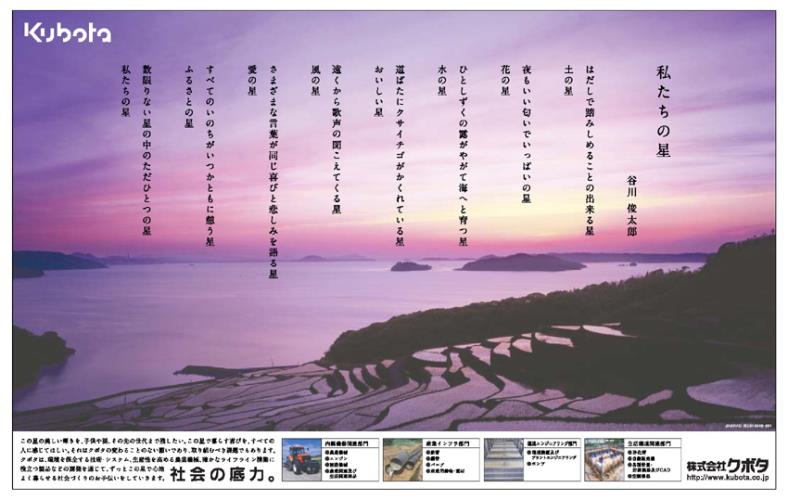Japan-based writer and traveller, specialising in design, lifestyle and travel journalism. Ron previously served as an editor of MING Magazine, ELLE Decoration and CREAM.

Early days, ten Hong Kong “writers” have teamed up with a household cleanser brand to launch a marketing campaign for “detergent literature”. Writers create literary works of less than 55 words each, printed on product packaging. The packaging in this series has generated a lot of buzz in the city. But it is something the brand doesn’t want to hear. Hong Kong literature lovers have laughed off the plan, saying that most of the selected writers are not literary. It has been said that the target creative market for these ten writers are young people, but the young people pay little attention to the brand’s promotion strategy, saying that it is their mother to buy the detergent and has nothing to do with them.
When it comes to literature and the packaging of goods, last year the Japanese technology company NEC introduced a coffee literature. The selling point is “drinkable literature”, which also created a buzz. NEC selected six classic literatures, including Tōson Shimazaki’s Collection of Young Herbs, Dazai Osamu’s No Longer Human, Natsume Sōseki’s I Am a Cat, Kokoro and Sanshirō, Mori Ogai’s The Dancing Girl and made unique coffee beans for each work. The packaging of the unique coffee beans for each work was printed with the title and the author's name on it. And of course, it was not the end.
Through an artificial intelligence system NEC the WISE developed by the company, NEC collected 10,000 impressions of reading for each work and ananlysed readers' different feelings when reading them. For example, when reading I Am a Cat, it feels like it was finished at one go without interruption. And the leading cat often speaks sarcastically, full of humor, but still reveals the bitter feelings towards the world. And the No Longer Human is known as the pain of the book. The thought after reading rises and falls, and cannot let go of for a long time.
Bitter, sweet, aftertaste, clarity and enjoyment, NEC found the corresponding feeling of reading for the five kinds of coffee beans. The bitterness of the story is bitter, the memory of youth is sweet, the thought of life is aftertaste, the consistent feeling is clarity and the pleasure of reading is enjoyment. NEC the WISE made readers’ feelings into a chart. NEC handed it to the coffee merchant Yanaka, asked them to mix the appropriate beans according to the chart and bake in different ways to get the right flavours. When people drinking coffee, they will have the similar feeling with the literature, which is the core concept of “drinkable literature”.
How well the coffee beans were selling is not what NEC care. This plan aims to promote the NEC the WISE and makes people know how does this series digitise the complex and abstract feelings of the public and turn them into concrete charts, even products.
In Japan, as in Hong Kong, literature is increasingly out of touch with everyday life. Fewer and fewer people are reading, which is a daily dilemma for Japanese publishers and bookstores. Because literature seems to be getting less and less noticed, I am always amazed to see the works of poets and writers in advertisements once in a while. Mitsuyo Kakuta and Shuichi Yoshida once cooperated to write serial novels for Tiffany on the Morning Sun Newspaper; the shopping mall LUMINE used five poems by the young poet Tahi Saihate as the concept of the mall's Christmas decorations. The most frequently selected work by advertisers was the work of the poet Shuntaro Tanikawa. In 2006, Kubota, a machinery company, used his creation Our Star as advertising copy.
Our Star—Shuntaro Tanikawa
The star step by barefoot
The soil star
The fragrant star when night comes
The flower star
The star with ocean made by a drop
The water star
The star sent by the strawberry along the roadside
The delicious star
The singing star from a far
The wind star
The star says the same joy and sorrow in every word
The love star
The star with all lives eventually coexist
The hometown star
The only one in the infinite stars
Our star
Shuntaro Tanikawa likens the small splendour of life to a star, and then, from close to far, draws his eyes to the earth where we live. In the advertisement, the poem is imprinted on the photos of the terrace at sunset, which is so beautiful. There are small notes under the picture: “I hope that the beautiful radiance of this star will leave to future generations. I hope that the joy of living on this planet will be shared by all people.” Through a poem with profound artistic conception, this advertisement deeply imprinted Kubota's image in the audiences' mind.
No matter the “drinkable literature” or other advertisements, literature and poetry will cover on the merchandises just like the mist. It is only when the reader moves it slowly away that the actual landscape becomes more profound. The marketing plan of household cleanser cannot move people's heart in the end. Perhaps the works of those ten writers lack the power of literature.